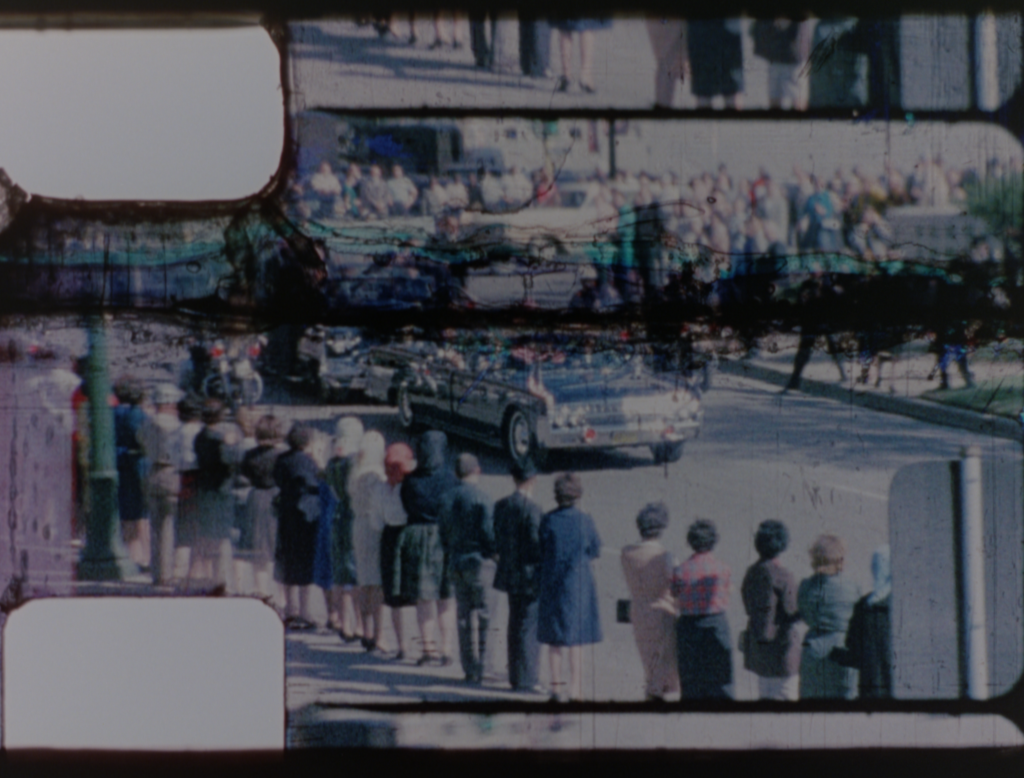
Zapruder Frame 157
Frame 157 appears just after a sudden and unexplained jump in the Zapruder film—following a cut that has silently erased frames 155 and 156 from the historical record. It is the other end of what appears to be a splice, the first being Frame 154, which is marred by a thick black stripe covering the bottom third of the image. That stripe abruptly vanishes in Frame 157, leaving a visible discontinuity that suggests frames have been physically removed.
Time, Inc., which purchased the film from Zapruder the day after the assassination, never acknowledged any tampering or loss of frames in this section of the film. Yet this kind of splicing is unmistakable. What happened to frames 155 and 156? Why were they cut—and more importantly, why was this cut never disclosed?
What’s known is that Time did eventually admit to damaging other parts of the film—specifically, frames 207 and 212—and losing frames 208 through 211 entirely. But even those admissions came only after years of public pressure and were delivered with little detail or accountability. And while those missing frames have attracted significant attention, the earlier splice between frames 154 and 157 has been largely ignored.
It’s hard to believe that such a glaring physical cut could have been overlooked, let alone occurred by accident. Time was not just any private entity—it was a national media powerhouse that had purchased what was immediately understood to be a film of profound historical significance. That they would damage or destroy multiple frames within hours of acquiring it, and then refuse to account for it, invites serious skepticism.
The Sixth Floor Museum, which holds a version of the film today, has offered no meaningful commentary on the Frame 154–157 splice. There is no official narrative, no preservation report, and no public-facing explanation of what caused this gap. As with the missing frames in the 200s, we are left to infer that the public is simply expected to accept that history was carelessly edited, and that no one is responsible.
But Frame 157, like its counterpart 154, resists that kind of passive acceptance. It stands as a visual marker of what’s missing—not just in terms of film stock, but in terms of truth.